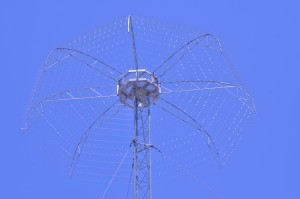- We Prevent Lightning Related Problems.

Lightning Protection In High Demand: Exports Increase by 183%
January 24, 2013
Lightning Strike Shuts Down Gondola System Leaving Tourists Stranded for Hours
February 7, 2013Beyond the Basics: Protecting Data Centers from Lightning Strikes

There is an infinite amount of information housed, shared and stored throughout facilities globally. It’s transferred through and to data centers around the planet. Small, medium and enterprise businesses and entire industries rely on this data to operate and provide an environment where the data can be handled securely and reliably.
However, there are potentially expensive concerns to consider where it relates to lightning strikes. The equipment and infrastructure in such a facility, which includes delicate and costly state-of-the-art hardware, internal circuitry and other system architecture, is susceptible to more than simply being taken off-line in the short term. It can be irreparably damaged and degraded, affecting the integrity of systems throughout a facility – even if a lightning strike occurs NEAR a facility. This has a direct impact on a company’s profitability, resources and assets.
I recently read an article entitled “How to Survive Lightning Strikes in Data Center Facilities” on the Lifeline Data Centers blog. Authored by Doug Theis, the company’s senior vice president of business development, the article discusses ways to protect your data center from lightning strikes by:
- avoiding building the facility near popular lightning spots,
- using backup power and generators, and
- installing the right lightning protection systems.
Lightning Protection
While these points are valid and should be included in every lightning protection plan they are not necessarily all controllable. For instance, it is impossible to escape lightning, no matter where one builds a facility. And it only takes one strike to do severe damage.
A far more proactive and comprehensive approach to lightning protection is to not get struck at all, and in the event that your data center suffers a strike, either directly or indirectly, to make sure that the necessary precautions are taken that will protect against lightning’s secondary effects. A tremendous amount of damage can be done if you do not consider all the areas that need protection; lightning strike protection, proper grounding with appropriate surge protection.
The immediate concerns related to lightning strikes are obvious: fires, injuries, downtime, damage to equipment and facilities… the list goes on. The surge of electricity that comes with a lightning strike, whether direct or indirect, can wreak havoc on sensitive equipment, even if it’s not immediately obvious, so it’s paramount to consider the hidden and future costs.
The most costly of them is “meantime between failure,” or the life expectancy of equipment, electronics and wiring necessary to operate, which often is drastically reduced by such a surge as the current travels through the ground overwhelming everything in its path. For example, if a $20 million system is slated for upgrade or replacement in 15 years, that expense could very well be incurred unexpectedly in just 10 years thanks to a strike. This substantially cuts into the bottom line, reduces the reliability of your data center, and creates future downtime and outages that could otherwise have been avoided with proper lightning protection in place. Think of it as an insurance policy against Mother Nature.
Theis’s assertion that it is nearly impossible to protect completely against lightning strikes is commonly taken as fact, but lightning strikes are currently being prevented in areas of concern at countless locations in more than 70 countries thanks to the solutions provided by Lightning Eliminators & Consultants, Inc.. Our 40-year-old technology has enjoyed a 99.87% success rate with eliminating direct strikes at the sites we protect. Rather than collecting lightning and directing it to the ground, as a traditional lightning rod does, our system prevents the formation of lightning within a protected area.
Our Dissipation Array System (DAS) uses a Charge Transfer System (CTS) to help prevent direct lightning strikes by reducing the electric field to below lightning-collection levels within the protected area. As a result, DAS helps prevent downtime and loss of assets, while increasing safety. The CTS prevents a lightning strike from occurring within a protected zone. It collects the induced charge developed by thunderstorm clouds from a designated protected area of the earth and transfers this charge through an ionizer into the surrounding air.
Lightning protection is a relatively low-cost step that recognizable organizations, including NEC, DST Systems, Turner Broadcasting, the City of Tampa, Banco Popular and Nissan North America, have taken to protect their assets. When you consider what steps your organization has taken to protect its assets – be they oil refineries, manufacturing plants, data centers or any other kind of facility – is lightning prevention on that list? If not, maybe now is the time to think about taking that important step.

